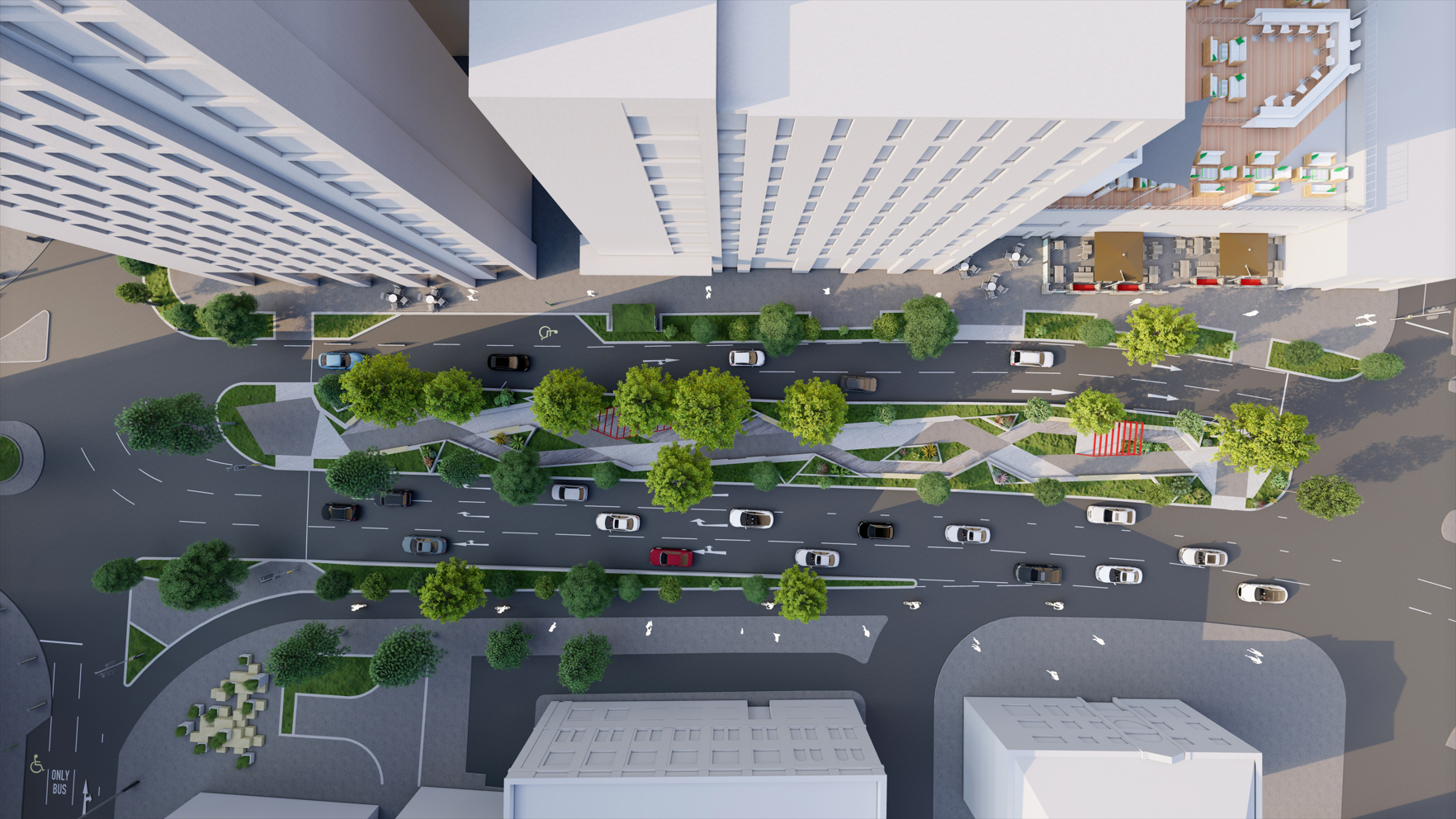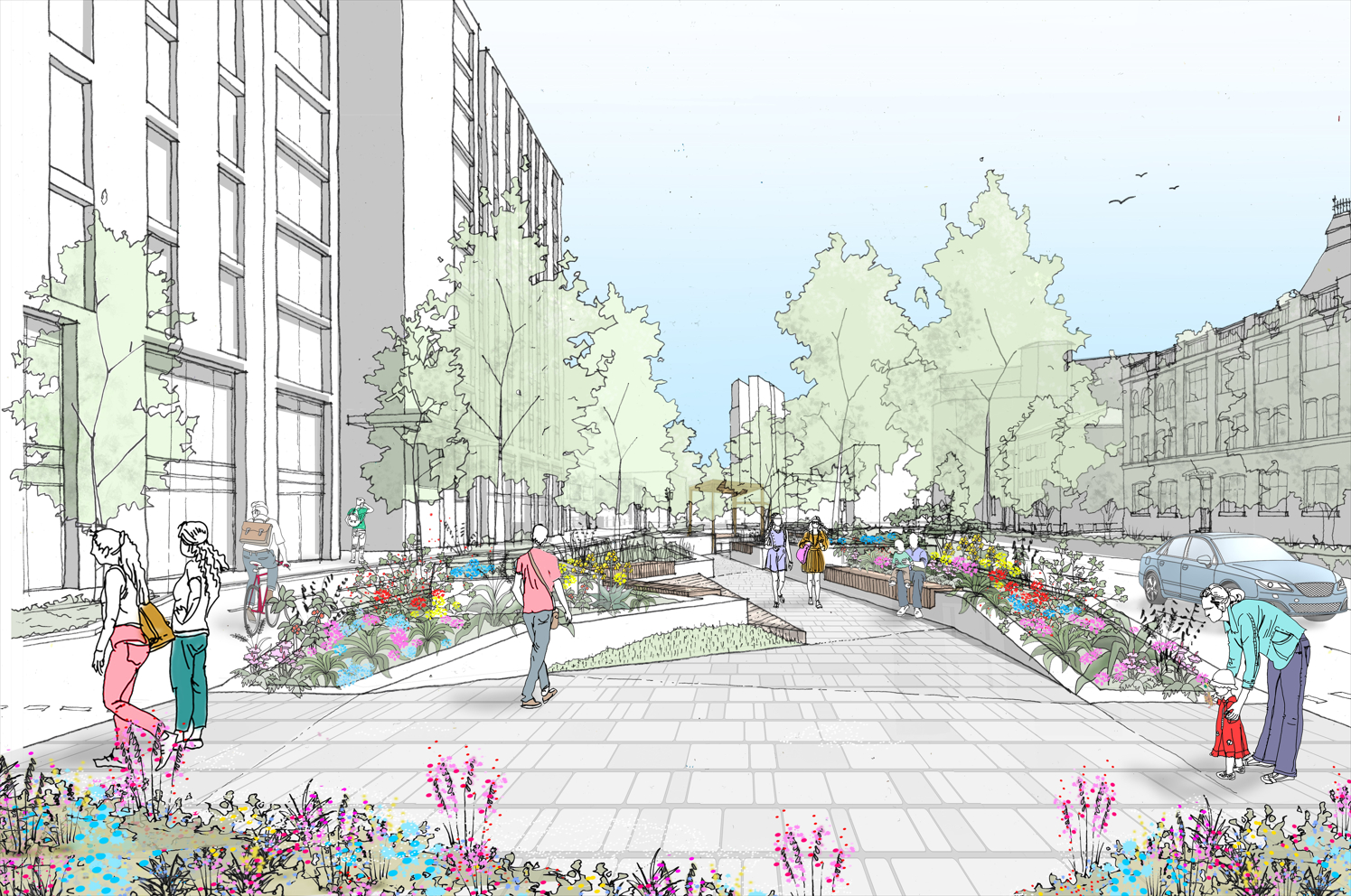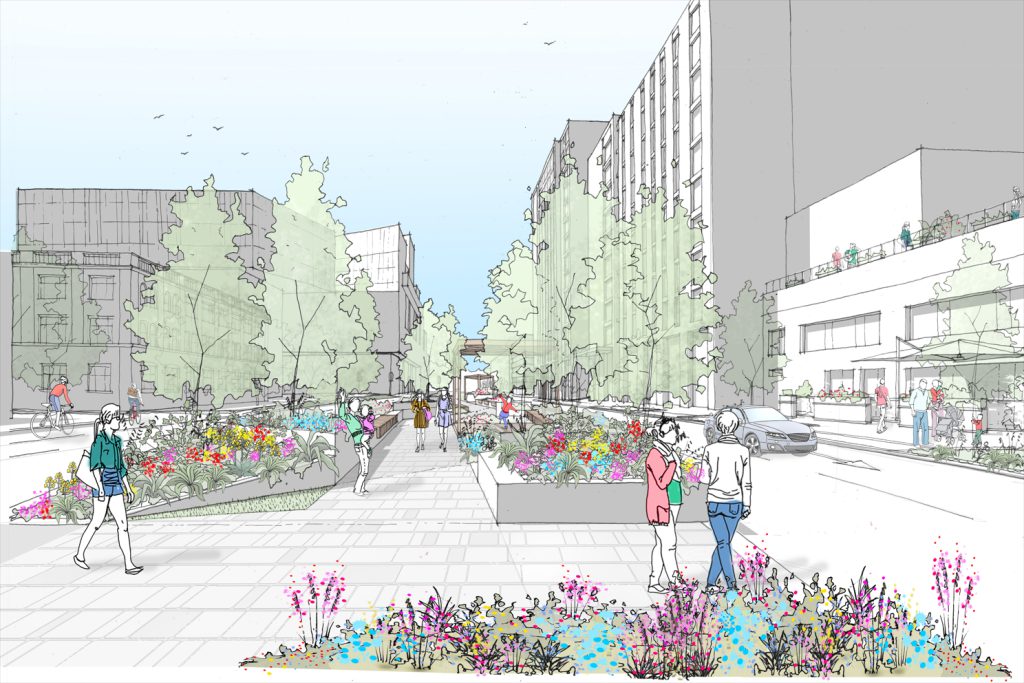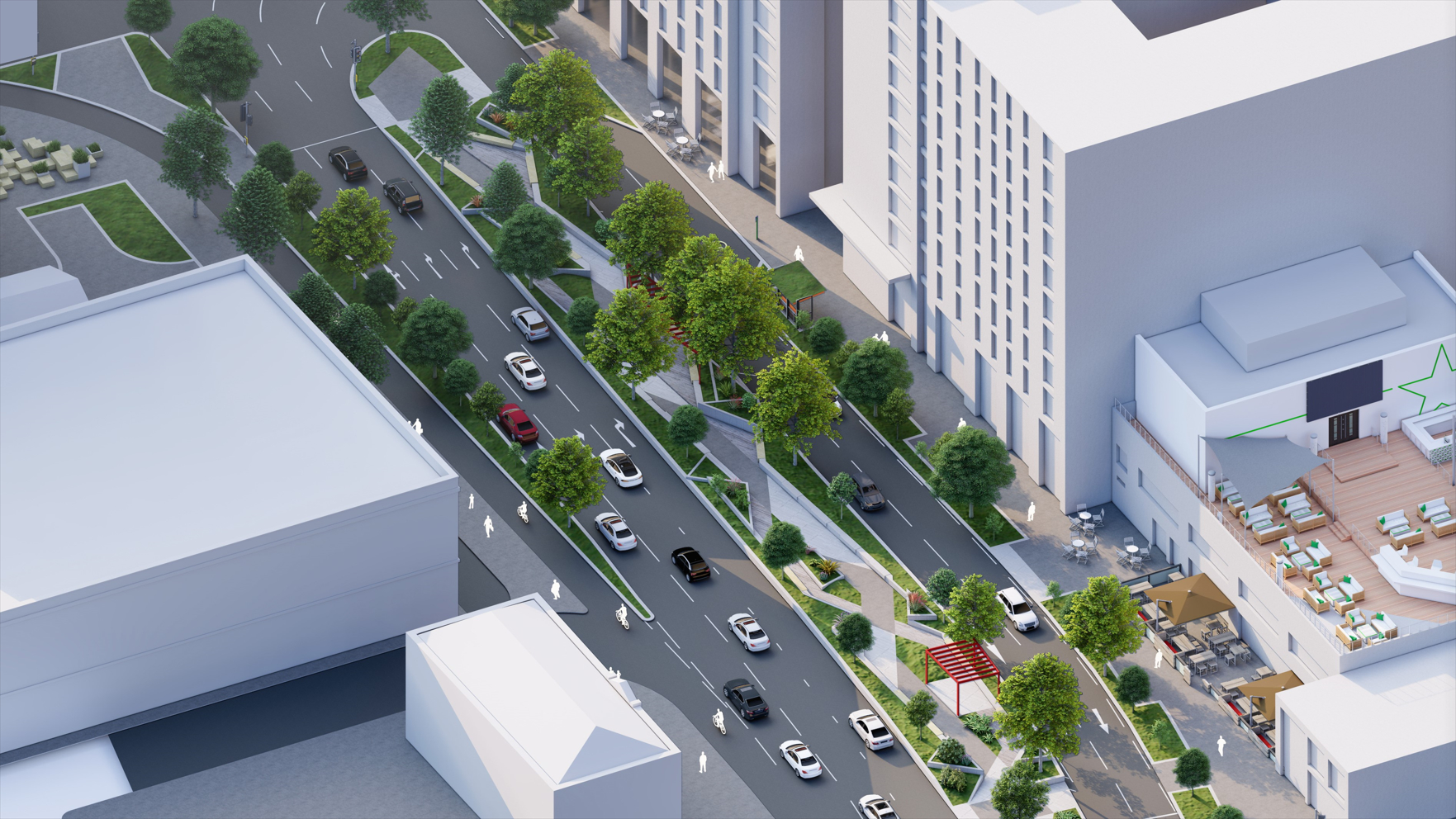The Dunbar Link - Grim to Great
It is very easy to simply accept the environment we experience every day without questioning if it can and should be better. As a Belfast-based practice, we are very conscious of how the built environment is evolving around us and are always looking for ways to improve the lives of the people who live, work, and visit our city.
A flood of student accommodation has now settled on the edge of Belfast’s Cathedral Quarter in recent years to coincide with the completion of the new University of Ulster complex. It is located beside the Dunbar Link, an underused 7-lane wide carriage way which slices through this part of the city, continues to be an eyesore, and poses a dangerous hazard to be negotiated by thousands of students and others every day.

OUR CONCEPT: GRIM TO GREAT
Tying in with the aims of UN Urban October to promote a better urban future our concept seeks to change this grim, inner-city, dual-carriageway into a people-friendly, sustainable, green, and bio-diverse street with the introduction of a linear-park with safe crossings. We sought to present a scenario where the necessary transport connections are rebalanced with the provision of a safe cycle route, laydown areas for buses and taxis, with clearly defined and reduced crossing distances for city dwellers on foot.
The increased number of residents and ground level commercial units requires a replan of the street scene to ensure the success of these units and the safety of pedestrians while enhancing the health and wellbeing of the people who live, work, and play in our city.

IMPLEMENTATIONS
This could be achieved by adapting the following ‘Grim to Great’ principles:
- Safe Movement: Reduce the number of traffic lanes, many of which are underutilised, thus making the pedestrian crossings safer for a considerable number of students and other city users.
- Surface Water Management: Introduce green spaces coupled with permeable paving and bioretention planting beds to assist with the management of the surface water and filtering of pollutants, thereby reducing the pressure on our city’s sewer and drainage infrastructure
- Urban Cooling: Replace asphalt, which has a high thermal inertia, with planted ground cover and trees to provide shading during the warmer summer months, areas of respite from the sun, and help to keep the city cool.
- Health & Wellbeing: Provide opportunities for greater exposure to nature, where people can linger and interact with others. Improve air quality and provide noise reduction.
- Biodiversity: Introduce more diverse species of trees, shrubs, and flowers which, when coupled with green walls, living roof bus stops, and sculptural installations, will help to enhance the overall biodiversity, vibrance and aesthetics of the street.
- Accessibility: Provide accessibility for all. Improved pedestrian, cycle and public transport access will enhance connectivity to Belfast, activate dead street frontages and encourage economic growth in the area.


OUR VISION
As illustrated in this post; we believe that the Dunbar Link could be reclaimed and transformed into an attractive, public, green space. An area which re-engages with the public, creating a much more inviting place to work, live and study.
We believe our concept of Grim to Great and the transformation of the Dunbar Link would represent a first step towards a more healthy, sustainable future for this part of Belfast and the concepts could and should be applied across our grim, grey infrastructure citywide.
Collaboration is essential to achieve a sustainable city and we would welcome the opportunity to engage with other interested parties including Belfast city council, DFL Road Service to expand upon our concept and explore ways on how to take this forward.
